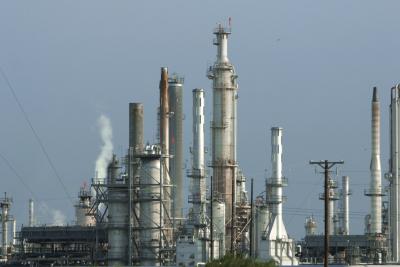
Gasoline is the fuel that runs the world. You may use gas in your car, your lawn mower, your tractor, your chain saw, your boat, your motorcycle and a hundred other everyday things. The process that oil refineries use to make gasoline can be simplified into three main steps: separation, conversion, and treatment.
Crude oil, such as the petroleum used to manufacture gasoline, is widely believed to have formed from long-dead accumulated organic matter. Subjected to high pressure and heat over time, the organic matter forms a substance called kerogen, which eventually breaks down into carbon and hydrogen atoms, which combine to make various hydrocarbons. This process takes millions of years, which can help explain why gasoline is so expensive!
Crude oil is heated in order to vaporize its various components, called fractions, after which the vapors are pumped into tall distillation towers. The vapors are cooled in stages so that they can separate into fractions based on their density and boiling point. The lightest fractions occur as vapor that rises to the top of the tower before condensing back into liquid form on the walls, where it drips into a tray to be pumped to a different station within the refinery.
The compounds in crude oil are mostly made up of two molecules: carbon and hydrogen. Compounds formed from only carbon and hydrogen are called hydrocarbons, and they can vary from fairly simple molecules -- methane, for instance, consists of one carbon and two hydrogen atoms -- to more complex molecules that consist of long hydrocarbon chains. During the conversion process, heat, pressure and sometimes particular chemicals are applied to heavy hydrocarbon molecules in order to break them down into lighter molecules.

During the treatment process, the simpler hydrocarbons are treated chemically and physically to remove impurities and then combined with one another and additives to produce the desired result, such as gasoline. Gasoline is made up of hydrocarbons with relatively low boiling points; the critical qualities of the finished product include octane number, volatility, and vapor pressure. Additives that enhance performance and protect engines from oxidation are applied to the hydrocarbon blend.
